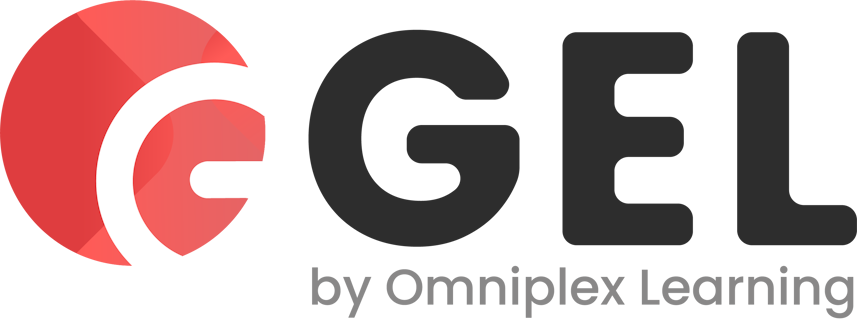AgilePM, also known as Agile Project Management, is the world’s most popular standardized framework for Agile. Developed by APMG International, AgilePM has proved demonstrably effective in powering the flexibility, efficiency, and value that has long made Agile a global name.
Becoming qualified in AgilePM is one of the best ways to prove your aptitude with the framework. This, combined with gaining experience in applying AgilePM in practice, can be highly beneficial for anyone pursuing a career in project management.
Of course, gaining an AgilePM certification means having to deal with the exams:
- AgilePM Foundation – This exam covers the core of AgilePM project management. Learners must have a firm grasp of the logic behind the framework, as well as the principles, project parameters, characteristics, and so on
- AgilePM Practitioner – This exam requires learners to demonstrate their ability to apply AgilePM in practice. It revisits many elements covered at Foundation level, including the roles and responsibilities of DSDM, requirements, risk and quality management, and so on. The exam uses a case study as the basis of the questions
Gaining certification in a methodology does not merely test your knowledge, it also verifies it. Employers and clients will have more confidence in your abilities. Even for those who are highly experienced in frameworks like AgilePM, an actual qualification is often still a prerequisite for higher-level management roles.
So, what is the best way to approach the AgilePM certification exams?
AgilePM Certification Exams: Frequently Asked Questions
How do I qualify for the AgilePM exams?
There are no formal prerequisites for taking the AgilePM Foundation exam, though it will certainly be helpful to have some prior knowledge of Agile, as well as project management in general.
You must pass the AgilePM Foundation exam before you can sit the AgilePM Practitioner exam.
What is DSDM?
The ‘Dynamic Systems Development Method (DSDM)’ is an approach to Agile project delivery from which AgilePM originally evolved.
DSDM gives AgilePM an advantage over other Agile frameworks. It provides a greater level of discipline whilst also enabling more precise strategic alignment with business goals. This can be seen in the role of DSDM’s Principles, Roles, and Responsibilities, along with how they are applied in practice.
What are ‘MoSCoW Prioritisation’ and ‘Timeboxing’?
‘MoSCoW Prioritisation’ and ‘Timeboxing’ are both covered in the syllabus, and learners should have a strong understanding of their purpose and use in Agile projects before attempting the AgilePM exams. Learners should also take into account the relationship between them, as well as the value they add to Agile projects.
MoSCoW Prioritisation is a technique for managing the requirements of a project. It can help stakeholders to understand the importance of project goals and priorities, making it easier to justify expenditure and direction.
A ‘timebox’ is defined by DSDM as a fixed period of time, at the end of which an objective should have been met. Progress is about achieving deliverables during this timeframe, not simply completing specific tasks. This is typically utilized at lower levels, so that larger goals take care of themselves.
How long does it take to study for the AgilePM exams?
Exactly how long it takes to get ready for the AgilePM exams depends on the individual. The Good e-Learning AgilePM Foundation and Practitioner package offers over 30 hours’ worth of material, including revision exercises and tutor videos. However, it is advised that you take as long as you personally need to become completely knowledgeable on the content of each module.
Remember, you can test yourself prior to an official exam with the knowledge checks and practice tests. Good e-Learning also offers fully qualified tutor support for course content.
How difficult are the AgilePM exams?
The AgilePM certification exams are not known to be unreasonably difficult as long as a learner has become familiar with the material. The pass rate of the Good e-Learning AgilePM Foundation and Practitioner course is 97%.
That being said, it is important to point out that with the Practitioner exam, a learner must not only know the methodology, but also how to apply and adapt it in practice. The exam itself will be based on a full project scenario, and so studying syllabus material without looking at case studies is potentially costly.

How do I prepare for the AgilePM exams?
If you want to give yourself the best chance of passing the exams, it is important to go beyond the modules of your AgilePM course. Take advantage of the case studies that are provided, as well as the reading list and any free resource links. Remember, there is a variety of additional content to be found online, such as blogs, videos, and podcasts. Online exam materials are also fairly common, such as forum posts about how difficult certification exams are to pass.
It will also be imperative that you look at practice examinations. This will help you get used to the conditions of the real thing, as well as how best to frame your knowledge.
Remember, the Good e-Learning support team is fully qualified to provide help regarding course content if you are struggling during the runup to the exam. We also provide feedback for answers to practice exam questions.
How do I take the AgilePM exams?
The AgilePM exams can be taken online via PeopleCert, an examination institute that hosts certification exams on behalf of the APMG. Good e-Learning also offers FREE exam vouchers and resits with its AgilePM online training courses.
What do I need to know about the AgilePM Foundation exam?
- The exam consists of 50 multiple-choice questions
- Learners have 40 minutes to complete the exam
- The exam is closed-book (no outside materials are permitted)
- To pass, learners must answer 25/50 questions correctly
What do I need to know about the AgilePM Practitioner exam?
- The exam uses scenario-based objective testing. The scenario in question will be covered in the material provided with the exam
- There are 80 multiple-choice questions divided into four sections (20 questions per section)
- Each section builds on the provided scenario
- Learners have two hours and 40 minutes to complete the exam (160 minutes)
- The exam is open-book
- To pass, learners must answer 40/80 questions correctly
Why study for the AgilePM exams with Good e-Learning?
Good e-Learning is a world-class online training provider with a diverse portfolio of project management courses. We cover a variety of methodologies, including AgilePM, PRINCE2 Agile, and MSP.
Our AgilePM courses were created with input from highly experienced practitioners. Students can enjoy instructor-led videos, interactive resources, practice exams, and more, as well as our free online training resource library. Our support team is also fully qualified to answer questions relating to course content, even in the runup to the certification exams.
We even offer a FREE exam voucher for every student, along with free resits.
Want to find out more? Visit our AgilePM courses for a free trial, or contact a member of the Good e-Learning support team today!




